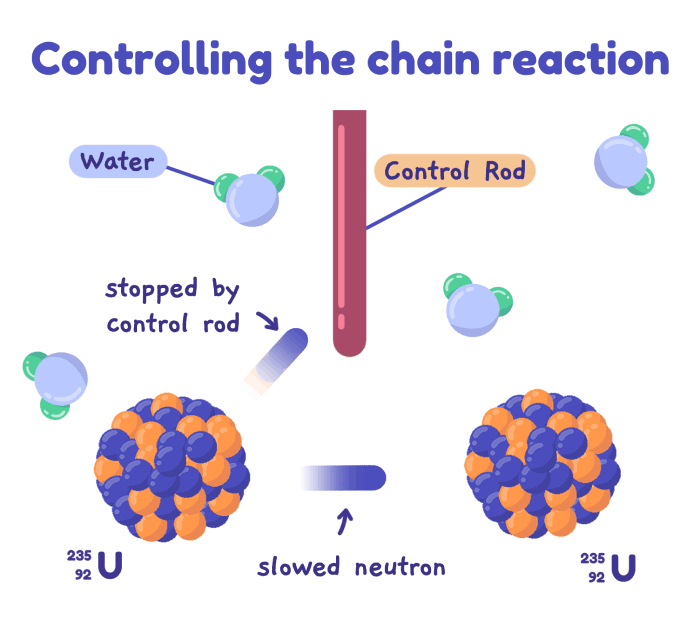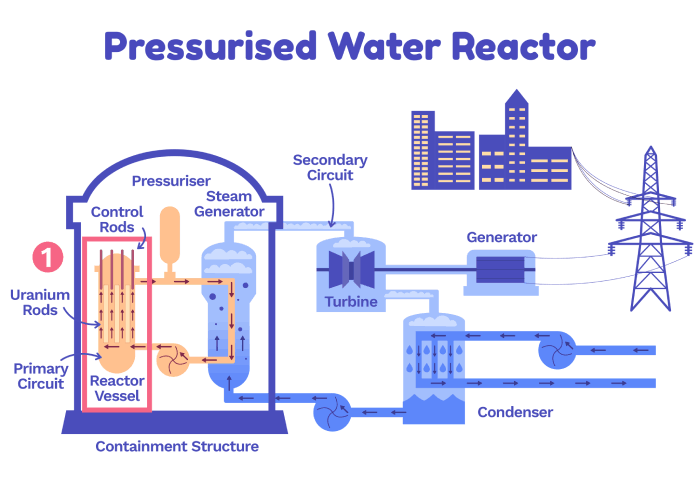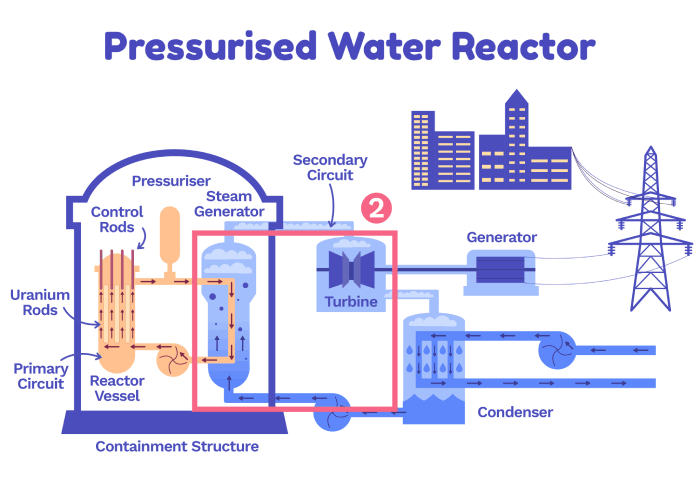Nuclear Power: Should We be Using It?
9 minute read
Updated on: 15 Jul 2021
Why nuclear?
Nuclear energy causes almost no CO₂ emissions compared to fossil fuels like coal and gas.
On top of this, nuclear can provide reliable electricity when it is needed.
Nuclear power has some opposition due to rare but highly visible accidents. Facing a challenge as bad as climate change, it’s worth carefully weighing up our options. We don’t want to make up our mind irrationally and miss out on something great! To do this, we first have to understand how nuclear power works.
How do we get energy from splitting atoms?
Have you heard of Einstein’s E = mc²? This equation essentially says that mass and energy are two sides of the same coin: we can convert mass into energy (and back)! That’s what nuclear power does.
Atoms are made up of protons, neutrons, and electrons. Protons and neutrons are in the center of the atom (called the ‘nucleus’). Protons have a positive charge, electrons a negative charge, and neutrons no charge at all
.
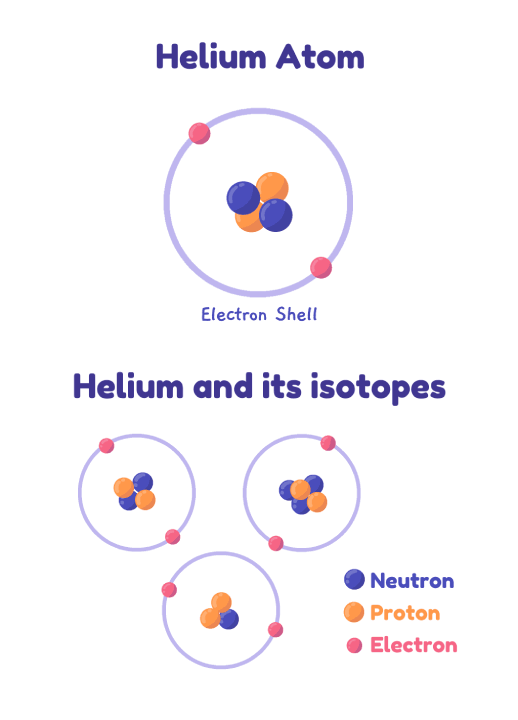
Helium
If you’ve seen the periodic table, you’ll know that each element on there is defined by the number of protons it has. However, atoms of the same element with the same number of protons can have different numbers of neutrons - these atoms are called isotopes of that element.
Today, nuclear power is based on nuclear fission: some isotopes of certain elements split when you fire a neutron at them.
In nuclear reactors, we now use Uranium-235 (U-235), an isotope of Uranium that has 92 protons and 143 neutrons. The isotope is named Uranium-235 because the sum of the number of its protons and neutrons is 235.
When you fire a neutron at U-235 and the U-235 nucleus splits, you get:
- Two smaller atoms
- A few neutrons (up to 5 but on average 2.5; this is somewhat random in each split
)
- Some energy in the form of heat
. This is where we get the energy from!
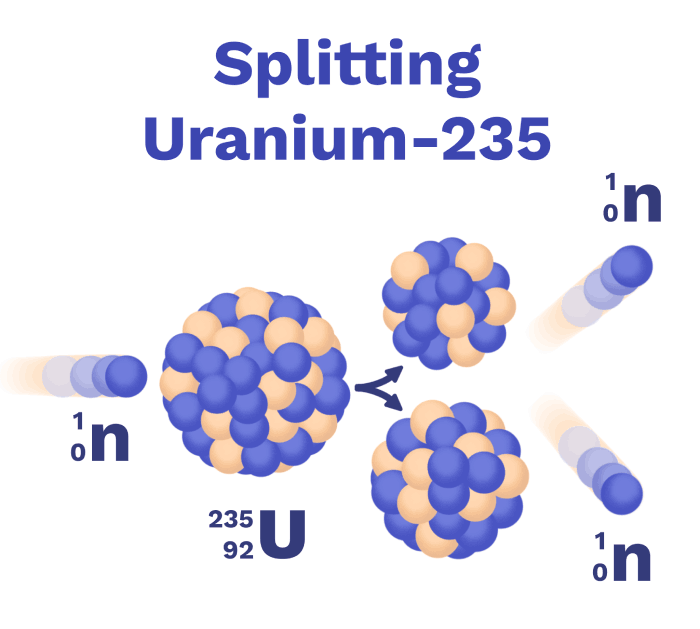
Splitting Uranium
What’s the difference between a nuclear bomb and a nuclear power plant?
Do you notice anything? One neutron causes a U-235 atom to split, releasing energy and more neutrons. These new neutrons can cause more U-235 to split, and the process keeps repeating. So, if you pack a lot of U-235 atoms into one place, you get…
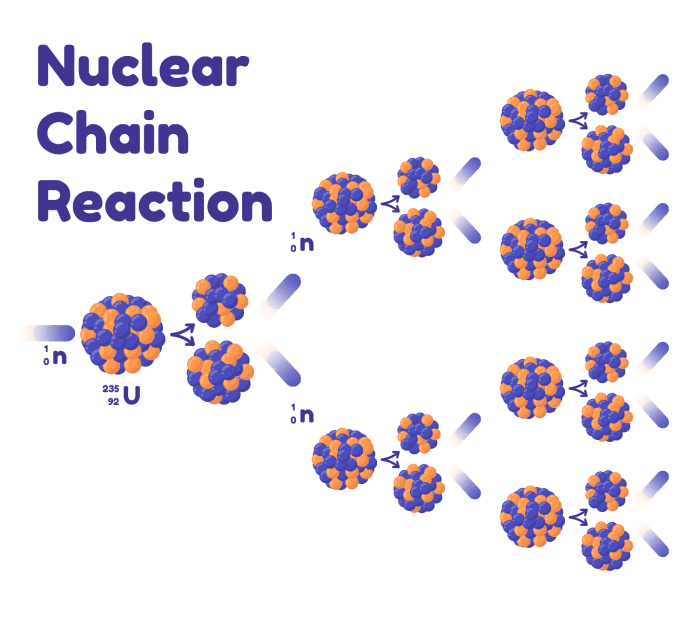
Nuclear Chain Reaction
If each split causes two or more splits, all the power will be released very quickly. This is basically what happens in a nuclear bomb. In nuclear power reactors, we want each split to cause, on average, exactly one more split. This keeps it stable and constant.
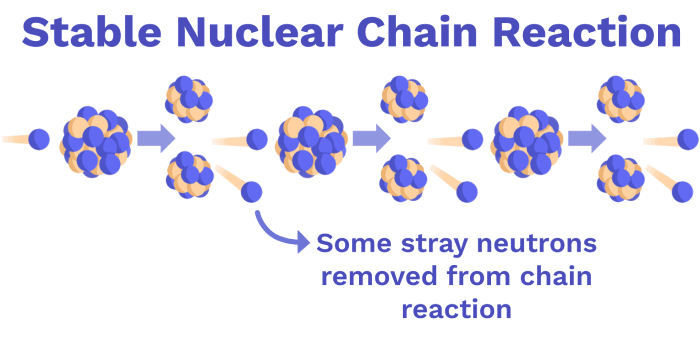
Stable nuclear chain reaction
A fast-moving neutron with lots of energy is more likely to bounce off a U-235 nucleus without splitting it than a slower-moving neutron is. However, if the neutron is too slow, the reactions occur exponentially. Therefore, we have to be careful about how much we slow the neutrons down.
To do all this slowing, we add a material called a moderator. Most of today’s nuclear reactors use water as their moderator
, but other options are being considered too
(more on this in the next chapter).
How do we get electricity from this?
Remember that each time a U-235 atom splits, heat is released? And also remember that today’s nuclear reactors use water as a moderator?
Pressurised Water Reactors (PWR) contain two water loops. The first, called the primary circuit, absorbs the heat from the fission of U-235.
This hot water then runs through a pipe that goes through a separate loop of water.
The steam created from boiling this second loop of water is then used to spin a turbine. This last part of the process is just like in a coal plant.
Is nuclear power safe?
All of the above are problems. Let’s look at the numbers, as much as we can.
Horrible accidents happened in Fukushima in 2011 and Chernobyl in 1986
. However, contrary to popular belief, nuclear accidents are extremely unlikely and altogether cause far fewer deaths than fossil fuels (mainly because burning fossil fuels releases deadly air pollution)
.
However, it is fair to say that expertise in building nuclear reactors helps countries get better at building bombs too.
The other downside to nuclear fission is the radioactive waste. Waste largely comes in two forms:
- Depleted Uranium-238: Natural Uranium is made of around 99.3% U-238 and 0.7% U-235
. But we need the uranium rods in reactors to contain 4-5% U-235 for reactors
. When creating this enriched fuel, we leave a large amount of U-238 behind. Luckily, this waste is not a risk
.
- Spent fuel and other radioactive waste: After a certain amount of the initial 4-5% U-235 in the enriched nuclear fuel
has been used up, the remaining material is no longer radioactive enough to be used efficiently
. However, it is still radioactive enough to be dangerous for humans and nature
for thousands to millions of years after it has been used
.
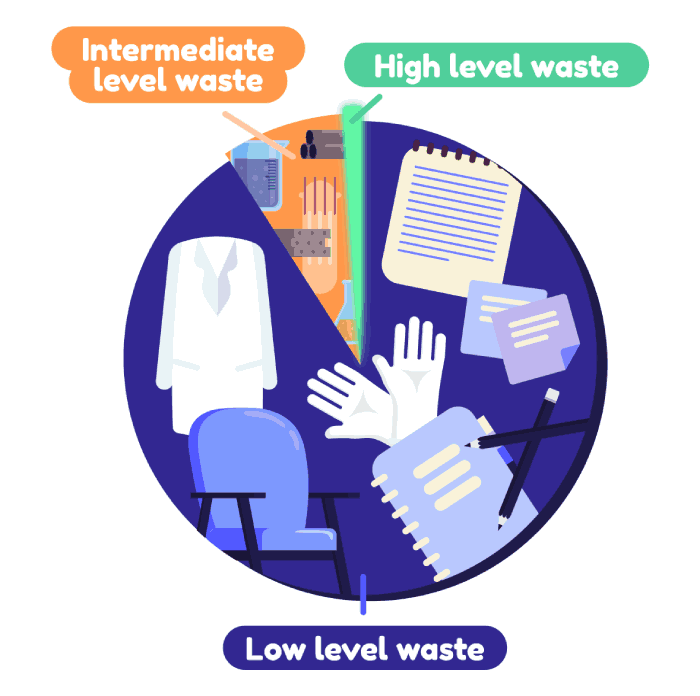
Most important types of waste from Nuclear Power
As of now, there are 90,000 tonnes of spent fuel in the USA (a football field 20 meters deep). While we do know how to store this waste temporarily, we do not yet have a long term solution
. In the next chapter, we will discuss potential ways to address this and get more energy from it!
Nuclear is expensive
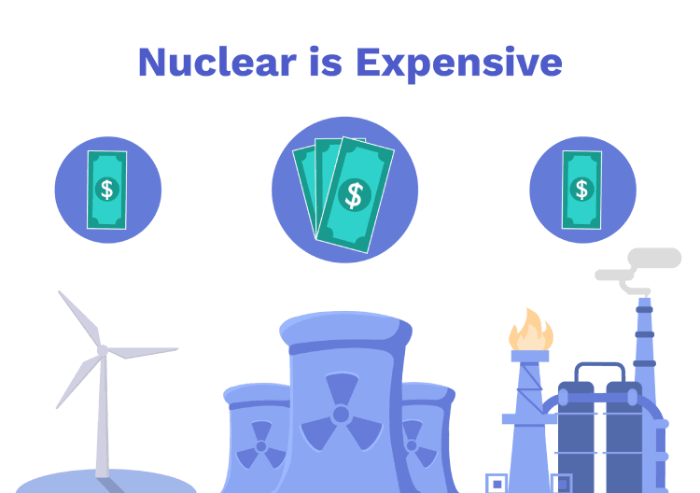
Nuclear is expensive
Aside from the public perception around the safety aspects of nuclear power, an undeniable problem is that building new nuclear plants is expensive. In fact, it is not considered profitable to build new reactors in Western countries today
.
Conclusion
Nuclear is a near zero-carbon and reliable energy source. While it’s too expensive to build new plants in the western nations, countries like China and India are stacking up - and that’s good for the climate
!
Today’s nuclear power has a waste problem. However, explosions are so rare and cause comparably few deaths that nuclear is, in fact, one of the safest forms of energy available
! While building new nuclear plants has become uneconomical in the western world
, turning off reactors that we’ve already built only removes a safe and near carbon-free alternative to coal
.
In the next chapter, we will look at new ideas in nuclear energy that could help solve the problems today’s nuclear has.
Next Chapter
